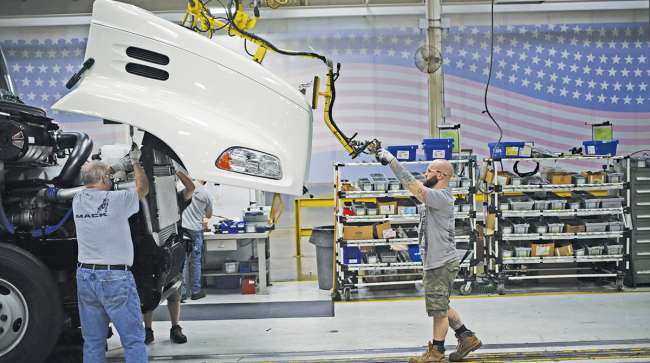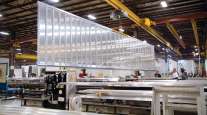Staff Reporter
March Class 8 Orders Stumble

[Stay on top of transportation news: Get TTNews in your inbox.]
North American Class 8 orders in March ended a short-lived recovery by dropping to 19,200 units, ACT Research reported.
Preliminary data from ACT showed orders declined 10% compared with the same period last year, when they hit 21,300 units. "Seasonally adjusted Class 8 orders are expected to be in a range of 15,000-20,000 units per month into the middle of the third quarter,” said Eric Crawford, ACT vice president and senior analyst. He noted that after coming in stronger than expected in February, orders fell back within the 15,000-20,000 range last month and have averaged 19,500 year to date.
Crawford pointed to robust order numbers into the latter part of last year as well as ensuing backlog support as to why orders have been expected in that range. The ACT Class 8 Dashboard also has given cautious readings when comparing year-to-date estimates with the prior year.
“Medium-duty demand declined year-over-year by double digits for the second consecutive month,” Crawford said, adding that March Classes 5-7 orders declined 15% year-over-year (up 9% month-to-month) to 18,600 units. The seasonally adjusted March intake, at 16,900 units, declined 16% year-over-year but was up 6% month-to-month).

ACT Research Vice President and Senior Analyst Eric Crawford (ACT Research)
FTR found similar results with its preliminary North American Class 8 net orders estimates reaching 19,000 units. It declined 11% year-over-year from 21,500 as well as 17% month-over-month from 22,800. The freight transportation research firm noted that the result fell in line with expectations.
“With build activity over the last several months hovering near 27,000 units, backlogs likely fell during the month,” FTR Chairman Eric Starks said. “Given that backlogs are sitting at such high levels, however, it is difficult to ascertain if there is a fundamental weakening in the Class 8 equipment market given order activity levels. The incoming order rate for March was 228,000 annualized, right in the sweet spot at replacement demand levels.”

Starks
FTR noted in the report slower order activity was anticipated with nearly all build slots filled for this year. It expects the reduced order levels will continue through the summer as the industry enters the normal seasonally weak order period. The report also noted that order activity has been running at an annualized rate of 340,000 units over the past six months. Class 8 orders have totaled 301,500 units over the past 12 months.
“Overall, the numbers were solid and will have little impact on production levels over the next two quarters,” Starks said. “Given the uncertainty in the economy, this is a welcome sign that demand has not collapsed and that fleets still have access to capital.”

Kayne Grau, CEO of Uptake, discusses ways that fleets can use data to prevent expensive truck repairs. Hear the program above and at RoadSigns.TTNews.com.
TD Cowen asked carriers about their orders in its truck equipment survey for the first quarter. It found orders as a percentage of their total fleet size were slightly higher than a quarter ago at 8% compared with 6% in the fourth quarter of 2022. The investment banking company said it was just about the only mildly positive takeaway from the survey.
“The results signal caution for Class 8 orders, with 56% of carriers who do not plan to order trucks citing ‘No Need’ as their reason versus 45% in Q4 2022,” Cowen analyst Jason Seidl wrote in the report. “We’re modeling for 2023 Class 8 builds of 310.9K units, slightly below consensus. We rate PCAR Market Perform on cyclical concerns but note that some investors may continue to see it as a defensive stock due to its quality and capital structure.”
Want more news? Listen to today's daily briefing below or go here for more info:




